The NHL has an officiating problem.
I don’t mean that in the sense that the league’s referees and linesmen themselves are the problem. Hockey is a fast, nuanced sport, and the on-ice officials are no worse than their NFL or NBA counterparts. Nor am I of the opinion that NHL officiating is progressively getting worse. Since the dawn of organized, regulated sports, officials have missed calls, mishandled situations and unjustly influenced outcomes of games. Human error, for better or worse, will exist as long as humans are adjudicating.
I refer instead to a small set of rules (though well-intentioned) that wind up preventing the officials from properly managing a game, demolish the flow of a game and tarnish the integrity of the sport. In its effort to remove gray areas from the game, the league has instituted more rules, and more nuance, and in doing so have created even more gray areas. As with all things, context is of the utmost importance in regards to implementing and interpreting a rule. Without further ado, I present four simple solutions to help fix the league’s rules and officiating crisis.
(Note: Most of the examples cited took place during Boston Bruins contests. They’re the team I cover and watch most closely. For the sake of neutrality, I’ve chosen instances where they were the beneficiaries of a flawed rulebook, as well as the disadvantaged).
Coach’s Challenge: Offside Review
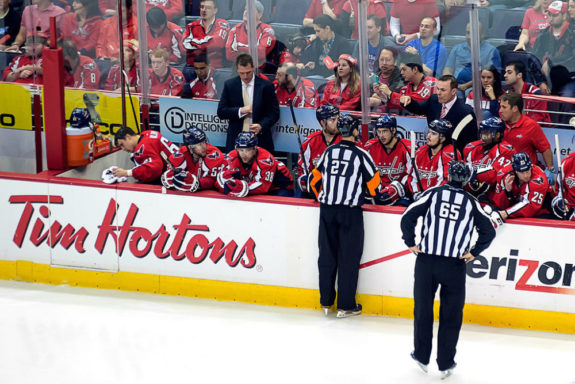
Obviously.
Heading into the 2015-16 season, the newly-instituted coach’s challenge seemed like an excellent idea. All major sports were beginning to take advantage of technological leaps regarding video replay, and the NHL was no different. Accuracy and the minimizing of human error couldn’t possibly be a bad thing, right? Plus, coaches would only be able to challenge several types of plays and would need their timeout to do so.
“Nightmare” is perhaps too strong a word. However, the results haven’t been what fans (or likely the league) had hoped.
For starters, we have seen a significant number of goals called back WELL after the zone-infraction took place. So long that, in many cases, all defenders get back into position and multiple players touch the puck between the infraction and the goal. Sometimes multiple players from both teams touch the puck in between. Take Noel Acciari’s goal-reversal in Game 4 of the ECQ, for example.
Acciari is, by definition, offside. However, the play is so close that the linesman standing just several feet away rules the play onside. Nineteen seconds elapse. Three different Bruins touch the puck before it winds up in the net. Acciari gains no discernible advantage on the entry, Ottawa has ample opportunity to thwart the attack, and fails to do so. The call is reversed, and Boston goes on to lose Game 4 by one goal.
Nowhere Near The Puck/Play
To showcase another area in which context should overrule a rigid rule, there’s this example of Montreal getting victimized. And for the record yes, I deliberately found a Canadiens clip to assuage any notions of Boston “homerism.”
Max Pacioretty is, by definition, offside. However, the play is ruled onside by the official whose job it is to judge these plays. Pacioretty is nowhere near the puck. He does not hinder any defender from making a play. He does not score, nor does he assist on the goal. The goal is called back, and Montreal loses by one goal.
In both instances, the play was technically offside. The issue isn’t a bad call, but rather a rigid rule. The NFL got rid of the “Tuck Rule” because its unintended consequences outweighed its intended usage. If the NFL (of all leagues) has the ability to contextualize a rule, the NHL has zero excuse.
Finally, and admittedly least importantly, these reviews absolutely demolish the flow of the game. The speed, flow, and back-and-forth nature of hockey help make it such a treat to watch. With reviews lasting two, three, four, or even five minutes, the sport is beginning to resemble football in terms of pace and stoppages. Think of every incredible, acrobatic endzone catch you’ve seen overturned because a guy’s toenail was on the white chalk. Contextually speaking, I would argue that preserving scoring and flow while honoring the call on the ice is more important than a technicality. Especially if that technicality has zero bearing on the goal itself.
The Solution(s)?
For starters, the NHL can institute its own “shot clock,” or statute of limitations. For example, if a potential offside occurs 15 seconds or more prior to the scoring of the goal, the play is not reviewable. A reasonable amount of time has transpired since the offense, and no discernible advantage was gained by the offending team.
Beyond that, the league can rule that the offending or offside player had zero bearing on the scoring of the goal, and that the goal counts. Think of the “Uncatchable Ball” rule in the NFL. If a receiving player is interfered with on a ball that is deemed “uncatchable,” the infraction is waived off. Imagine if the NFL called pass interference in the playoffs on a ball four feet over a receiver’s outstretched arm. There would be chaos, and rightfully so. Thankfully, the NFL understands context and instituted a rule to showcase that understanding.
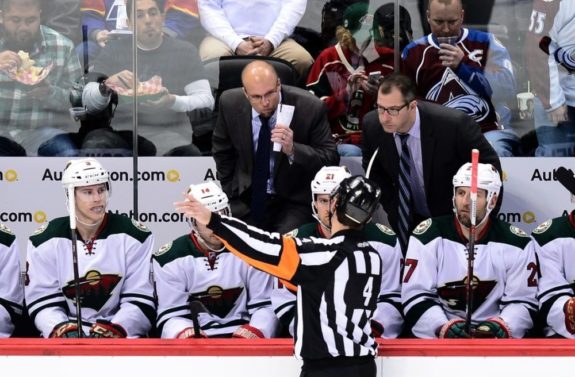
Finally, the NHL should remove the “coach’s challenge” aspect of the review, and call for reviews themselves. The review is a momentum killer, and for the coach of the team which conceded the goal, the killing of momentum is deliberate, regardless of the outcome of the play in question.
Think of it this way: Playoff game. No score, early in the third period. You’re the coach, and your team has just been scored on. If the zone entry was even remotely close, is there any question you will challenge the play? The best-case scenario is the reversal of the goal. Worst case? You get to spend three-to-five minutes talking to your team while robbing your opponents of all the momentum they’d gained by scoring. Instead of celebrating and getting their second wind, now they’re watching the Jumbotron. Waiting. Hoping. Worrying.
That’s too much power to give to a coach.
Delay of Game: Puck Over Glass
This is another instance of the league’s well-intentioned yet devoid-of-context rules. The rule is in place to prevent a hemmed-in team from stopping play to catch a quick breather. By definition, it’s a good rule. But when you think of it, that’s exactly the reason why “icing” was instituted. So why is it that one infraction results in a penalty and not the other?
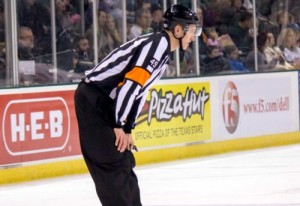
In Game 6 of the ECQ, the Boston Bruins were assessed THREE delay-of-game penalties in the first 15 minutes of play. That’s a ridiculous figure, and one the Bruins have no real excuse for. However, while Joe Morrow’s infraction (the second penalty) is pretty inexcusable, the other two shed light on a rule devoid of context. On the first infraction, there isn’t a single Ottawa player within three feet of Sean Kuraly. There’s nothing stopping him from skating the puck out of his zone. It’s clear that his intent (key word) is not to stop play, and certainly not to take a penalty. The puck just sails on him.
On the third (and most illuminating) offense, Colin Miller bats a puck out of midair, and it sails over the glass. Though he’s playing the puck in a danger area, there (again) is not a Senators player within several feet. It’s actually a rather skillful play from Miller. Considering how unpredictable the trajectory of a batted-puck is, it seems awfully unfair to penalize a player (and team) for such an offense.
The Solution(s)?
Replace the minor penalty with the same repercussions as icing the puck: A faceoff in the defensive zone and no line change. The league could even revoke the offending team’s right to call a timeout to give its tired players a breather. There is a way to discourage and penalize a team for sailing the puck over the glass without actually assessing a penalty.
At the very least, the league could tweak the rule so as to not include pucks batted out of midair.
Goaltender Interference
I actually take zero issue with goaltender interference being a challengeable offense. What I do take issue with is the seemingly never-ending stream of revisions, tweaks, and re-interpretations of the rule. And I’m certainly not alone in that sentiment:
If someone knows [what goalie interference is], call and tell me.
-Milan Lucic to Frank Seravalli/TSN.ca May 6, 2017
The play in question is truly a tricky one.
There are multiple factors to consider here. For starters, Darnell Nurse 100 percent pushes Ryan Kesler into his own goaltender, making him the initiator of contact. However, it’s also important to note that Kesler can be clearly seen holding Cam Talbot’s leg down, while also making zero effort whatsoever to stand up or vacate the crease in the four or five seconds that transpire between contact with the goaltender and the puck entering the net.
It’s a near-impossible call to make, and either outcome would enrage players and fans alike. Personally, I view this as two separate incidents. Had the puck gone in during or immediately after Nurse pushed Kesler into his own goaltender then the goal stands. However, Kesler has ample time to stand up or vacate the crease, chooses to not do so, and therefore the goal should have been disallowed, in my opinion. The goal allowed Anaheim to tie Game 5 with just 15 seconds to go, en route to an overtime victory. Moreover, the win staved off elimination for the Ducks in a series they ultimately won in seven games.
Not-So-Tricky Calls
Not all goaltender interference calls are quite so difficult to assess as Kesler’s. The Bruins had a potential game-winning overtime goal called back in Game 5 of the ECQ, and it’s a prime example of just how murky the rule has gotten. And yes, I promise that bad calls that went the Bruins’ way are coming. I promise.
The initial ruling on the ice was no goal due to interference, and that partially explains the final ruling. However, several things are clear from watching the replay. For starters, Marc Methot makes contact with Kuraly while he’s crashing after his own rebound, partially spinning him around. Secondly, Kuraly is attempting to play the puck in his skates when incidental contact is made on a loose puck/rebound in the crease; he has no opportunity to avoid contact with Craig Anderson. Moreover, the only reason that contact is made is because Anderson flashes out his pad; Anderson is essentially the initiator of contact, tripping Kuraly as he attempts to pot the rebound.
It seemed to me that the goal should have counted.
The Solution(s)
This is the most difficult area of the game to clean up. It’s important to protect a stationary goaltender’s space and well-being with a forward bearing down on him, or existing and remaining in his crease. At the same time, I can’t tell you how many goaltender interference calls I’ve witnessed with the goalie partially (or fully) outside of his crease; a forward should have just as much of a right to maintain a net-front presence, provided he is outside of the crease.
Determining intent and establishing (and maintaining) consistency with the rulings is probably the best we can realistically hope for. Should it be determined that a player makes a reasonable effort to avoid contact, the skater should be given the benefit of the doubt. If a skater has an opportunity to avoid contact or remove himself after being forced into/held by the goaltender, the goaltender deserves the call. Should a goaltender be even partially outside the crease (any limb or his stick), the interference should be waved off.
If there’s a silver lining to this, it’s that the NHL will certainly look to do a better job of determining intent and establishing consistency with its calls. This will be a major priority for the league following so many disputed goals in these playoffs. But as The Grateful Dead once sang, “Every silver lining has a touch of grey (area).”
Abolish The Automatic 10-Minute Misconduct for Instigating
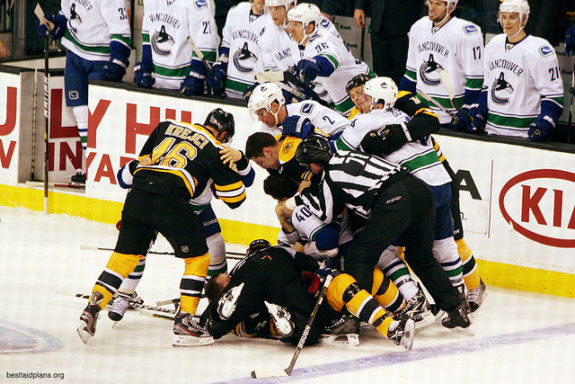
“Automatic” is the key word in the headline, hence the very sleek and sophisticated utilization of italics.
There are absolutely instances where the instigator of a fight deserves a 10-minute misconduct. Namely, every time a fight is started immediately following a clean, hard hit. Players shouldn’t be forced to fight or flee every time they lay a clean, hard hit on their opponent; that’s hockey. Plain and simple.
However, a 10-misconduct regardless of context is asinine. It’s detrimental to the players, teams, fans, and the overall sanctity of the sport.
Take the hit and ensuing fallout in the video below, for example.
Matt Beleskey’s hit on Derek Stepan is clean from a form perspective, but it is absolutely a late hit. No penalty was issued to Beleskey on the play, and Stepan is injured as a result of the hit (he wound up missing three weeks and 10 games with broken ribs). Dylan McIlrath witnesses the hit, and does what he’s supposed to do not as an enforcer, but as a teammate and a hockey player: he sticks up for his fallen comrade.
Not only do the Rangers lose their top-line center, they’re also forced to go shorthanded for two minutes and lose one of their six defensemen for a total of 17 minutes. Boston scores on the ensuing power play to tie the game, en route to a 4-3 win. It was a game-changing sequence of events, and one the Rangers wound up on the short end of, through no fault of their own.
Brad Marchand
As a Bruins writer (and admitted fan), Brad Marchand commands much of my attention every time he steps onto the ice. He has blossomed from pest-with-upside to legitimate NHL sniper and two-way stud. He’s an All-Star, Olympic Gold Medalist, Stanley Cup winner, and were it not for this moment, we could probably add “40-goal scorer” onto that list. That clip, however, and the myriad of plays like it that Marchand has perpetrated, are also precisely the reason an automatic 10-minute misconduct is ridiculous.
Suppose one of Jake Dotchin’s teammates had witnessed the malice and intent with which Marchand shishkabobed Dotchin’s nether-regions. Is it realistic to expect them to practice a gentleman’s restraint in the moment? Would it be fair to remove the avenging teammate from play for 17 minutes while also negating a deserved power play? No, of course not. And I can tell you that with absolute certainty, because I possess the ability to contextualize a situation or incident.
To Marchand’s credit, he at least stands to face the music when vengeance comes calling, as seen in the 2011 Stanley Cup Final. It doesn’t fully atone for the preceding sin, but it’s more than we can say for the guy in the next video.
A Worthy Misconduct and a Heck of a Punch
The recent Micheal Haley/Calle Jarnkrok incident showed us several things that are right AND wrong with hockey today. For starters, Calle Jarnkrok lays a very dangerous hit on his opponent. The point of contact is high and completely from behind. It’s exactly the kind of hit the NHL is trying to do away with. Jarnkrok does not have a history of suspensions or supplemental discipline, but that probably doesn’t matter much to the guy whose face just got slammed into the glass.
“The guy” in this instance happens to be Micheal Haley, who is no stranger to ye olde fisticuffs. When he (understandably) gets up looking for blood, Jarnkrok bolts for the state line, only to be nabbed by his pursuer and fed a healthy knuckle sandwich for the road.
(Note: I keep reading about how Haley “sucker punched” Jarnkrok. I didn’t realize it was possible to sucker punch someone while they were actively, knowingly running away from you.)
In his infinite wisdom, Tim Peel gave Jarnkrok two minutes for boarding and Michael Haley five, 10, and a game misconduct. Did Haley deserve the gate? Absolutely. Seven minutes to go in the game, his team is down by three…a player like Haley is only going to exacerbate the situation if you give him a chance to get back on the ice in this game.
But Calle Jarnkrok deserved the gate as well. Haley’s actions were a direct result of (again) the exact kind of dangerous hit the NHL claims to be trying to remove from the game. It’s on the officials to (again) contextualize the situation and manage the game.
The Solution(s)
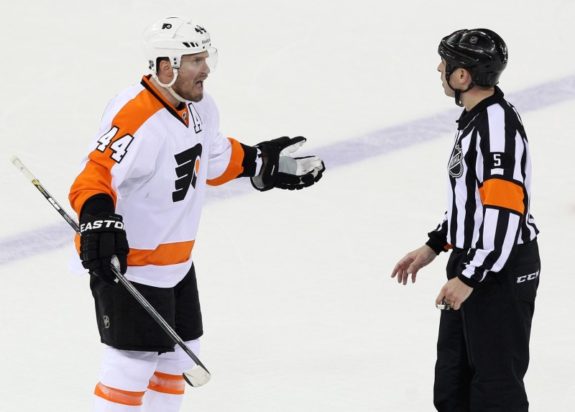
Coming down more severely on a player sticking up for himself or his teammate than the player whose illegal and dangerous action initiated the confrontation is a dangerous road for the NHL to travel. Furthermore, it’s a road that will likely only serve to embolden players like Marchand while handicapping players like McIlrath and Haley.
One of the things that has made the NHL so unique and virtuous is that until very recently, players were allowed to (within reason) police themselves. Players who “stir the pot” knew that their actions would likely be met with a guy like Bob Probert or Tie Domi performing free dental work. It served to help keep those agitators in line while ensuring that the on-ice officials could minimize their impact on the outcome of a game.
I fear that the weeding-out of enforcers combined with inconsistency from the Department of Player Safety and on-ice officials will only serve to perpetuate dangerous hits and cheap stick work. Readjusting league policy on the 10-minute misconduct and adjudicating on a case-by-case basis is a good start. There’s already a two-minute penalty for instigating; anything more for a player sticking up for a teammate or himself following a dirty play is overkill, and ultimately detrimental to the sanctity of the sport.
Summary
As your commissioner, I would uphold the tenets that make this sport great while finding creative and contextualized solutions for the many problems that you, the fan, face. The night is always darkest just before the dawn, and I look forward to solving the problems of yesterday with the solutions of tomorrow. Good night, and God bless.